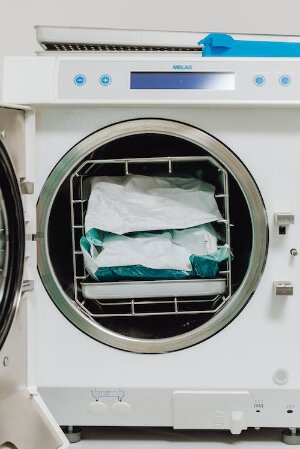
In healthcare, ensuring the safety and cleanliness of medical equipment is paramount. The importance of effective sterilization cannot be overstated, as it plays a crucial role in preventing the transmission of infectious diseases and maintaining a sterile environment for patient care. Over the years, advancements in technology have revolutionized the field of medical sterilization, leading to the development of cutting-edge sterilizers that are transforming healthcare practices.
Advancements in Medical Sterilization Technology
Gone are the days when healthcare providers relied solely on traditional methods such as Sada Medical Autoclave Sterilizer and chemical disinfection to sterilize medical instruments. While these methods have been effective to a certain extent, they often require lengthy sterilization cycles, use harsh chemicals, and may not be suitable for all types of equipment. Enter the new era of medical sterilizers, which offer innovative features and technologies that address these limitations and take healthcare sterilization to new heights.
Low-Temperature Sterilizers for Sensitive Instruments
One of the most notable advancements in medical sterilization technology is the adoption of low-temperature sterilizers. These devices utilize alternative methods such as hydrogen peroxide vapor, ozone, or ethylene oxide gas to achieve sterilization at lower temperatures. This is particularly beneficial for sensitive instruments that are susceptible to damage from high temperatures, including endoscopes, delicate surgical tools, and electronic devices. Low-temperature sterilizers not only reduce the risk of equipment damage but also offer faster turnaround times, allowing healthcare providers to improve efficiency and provide timely care to patients.
Robotic Sterilizers and Automation
Another groundbreaking technology in medical sterilization is the integration of robotics and automation. Robotic sterilizers can perform intricate sterilization processes with precision and consistency, eliminating the human error factor. These robotic systems are equipped with advanced sensors and artificial intelligence algorithms that enable them to detect and adapt to different types of instruments, ensuring thorough and effective sterilization. By automating the sterilization process, healthcare facilities can enhance productivity, reduce labor costs, and minimize the risk of contamination associated with manual handling.
Advanced Monitoring and Tracking Systems
Furthermore, the use of advanced monitoring and tracking systems has revolutionized the traceability of sterilized instruments. With the help of barcode or RFID technology, medical sterilizers can track each instrument throughout the entire sterilization cycle, from loading to unloading. This level of traceability ensures that instruments are properly processed and allows healthcare providers to maintain detailed records of sterilization history for compliance purposes. In case of any recalls or infections, the tracking system enables swift identification and removal of affected instruments, safeguarding patient safety and minimizing potential risks.
Connectivity and Cloud-Based Solutions
Additionally, the integration of connectivity and cloud-based solutions has transformed the management of medical sterilizers. With smart sterilizers, healthcare providers can remotely monitor and control the sterilization process, access real-time data and analytics, and receive alerts and notifications. This connectivity enables proactive maintenance and troubleshooting, ensuring uninterrupted operation of sterilizers and minimizing downtime. Furthermore, cloud-based platforms allow for seamless data sharing and collaboration, facilitating best practices and quality improvement across different healthcare facilities.
Innovations in Sterilization Packaging Materials
The revolution in medical sterilization technology is not limited to equipment sterilizers alone. Innovations in sterilization packaging materials have also played a vital role in enhancing the safety and efficiency of the sterilization process. Self-sealing pouches, sterilization wraps, and containers with built-in indicators for sterility verification have simplified and standardized packaging procedures. These materials are designed to maintain sterility and provide a protective barrier against contaminants, ensuring that instruments remain sterile until they are ready to be used. Such advancements in packaging materials complement the cutting-edge sterilizers, creating a comprehensive approach to infection prevention and control in healthcare settings.
Want to read more about technology? Try this article: Unraveling the Wonders of Technology
Conclusion: Transforming Healthcare through Technological Innovations
The field of medical sterilization has experienced a remarkable transformation in recent years, thanks to the advent of cutting-edge technology. Low-temperature sterilizers, robotic systems, advanced monitoring and tracking, connectivity, and innovative packaging materials have revolutionized the way healthcare providers approach sterilization processes. These advancements not only enhance patient safety but also improve efficiency, reduce costs, and enable better compliance with regulatory standards. As technology continues to evolve, we can expect even more groundbreaking innovations in medical sterilization, further revolutionizing healthcare and shaping the future of patient care.

